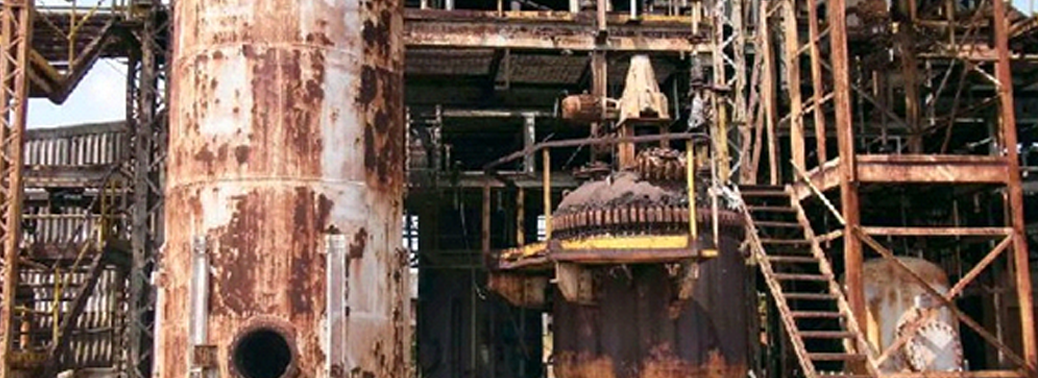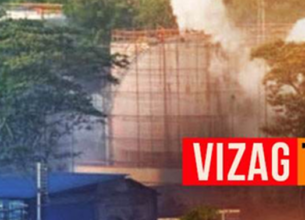SAFEGUARDS AGAINST CHEMICAL DISASTERS IN INDIA
09, May 2020

Prelims level : Medicine and Pharmaceuticals
Mains level : GS-II Issues relating to development and management of Social Sector or Services relating to Health, Education, Human Resources.
Why in News?
- Vizag gas leak tragedy has put the spotlight on the safeguards available against chemical disasters in India.
Law before Bhopal Gas Tragedy:
- At the time of the Bhopal gas tragedy, the Indian Penal Code (IPC) was the only relevant law specifying criminal liability for such Incidents.
- Section 304: culpable homicide not amounting to murder.
- Section 304A: deals with death due to negligence and imposes a maximum punishment of two years and a fine.
- Soon after the tragedy, the government passed a series of laws regulating the environment and prescribing and specifying safeguards and penalties.
Laws after Bhopal Gas Tragedy:
- Bhopal Gas Leak (Processing of Claims) Act, 1985, which gives powers to the central government to secure the claims arising out of or connected with the Bhopal gas tragedy. Under the provisions of this Act, such claims are dealt with speedily and equitably.
- The Environment Protection Act, 1986, which gives powers to the central government to undertake measures for improving the environment and set standards and inspect Industrial Units.
- Hazardous Waste (Management Handling and Trans boundary Movement) Rules, 1989: Industry required to identify major accident hazards, take preventive measures and submit a report to the Designated authorities.
- Manufacture, Storage and Import of Hazardous Chemicals Rules, 1989: Importer must furnish complete product safety information to the competent authority and must transport imported chemicals in accordance with the amended rules.
- Chemical Accidents (Emergency, Planning, Preparedness and Response) Rules, 1996: Centre is required to constitute a central crisis group for management of chemical accidents; set up quick response mechanism termed as the crisis alert system. Each state is required to set up a crisis group and report on its work.
- The Public Liability Insurance Act, 1991, which is insurance meant to provide relief to persons affected by accidents that occur while handling hazardous substances.
- The National Environment Appellate Authority Act, 1997, under which the National Environment Appellate Authority can hear appeals regarding the restriction of areas in which any industries, operations or processes or class of industries, operations or processes shall not be carried out or shall be carried out subject to certain safeguards under the Environment (Protection) Act, 1986.
- National Green Tribunal, 2010, provides for the establishment of a National Green Tribunal for effective and expeditious disposal of cases related to environmental protection and conservation of forests.
Recent Major Gas-Leak related Disasters:
- 2014 GAIL Pipeline Blast:On 27 June 2014, a massive fire broke out following a blast in the underground gas pipeline maintained by the Gas Authority of India Limited (GAIL) at Nagaram, East Godavari district of Andhra Pradesh.
- 2014 Bhilai Steel Plant Gas Leak: In another incident in June 2014 at Bhilai Steel Plant in Chhattisgarh’s Durg district, six people were killed and over 40 injured in an incident of leakage in a methane gas pipeline at a water pump house.
- 2017 Delhi Gas leak:Around 470 schoolchildren were hospitalised after inhaling poisonous fumes that spread due to a chemical leak at a container depot near two schools in the customs area of Tughlaqabad depot.
- 2018 Bhilai Steel Plant Blast:Nine people were killed and 14 others injured in a blast at the Bhilai Steel Plant of state-owned SAIL.
Cause for Concern Now:
- According to the National Disaster Management Authority (NDMA), in the recent past, over 130 significant chemical accidents have been reported in the country, which have resulted in 259 deaths and caused major injuries to more than 560 people.
- There are over 1861 Major Accident Hazard (MAH) units spread across 301 districts and 25 states and three Union Territories in all zones of the country.
- Further, there are thousands of registered and hazardous factories and un-organised sectors dealing with numerous ranges of hazardous material posing serious and complex levels of Disaster Risks.








